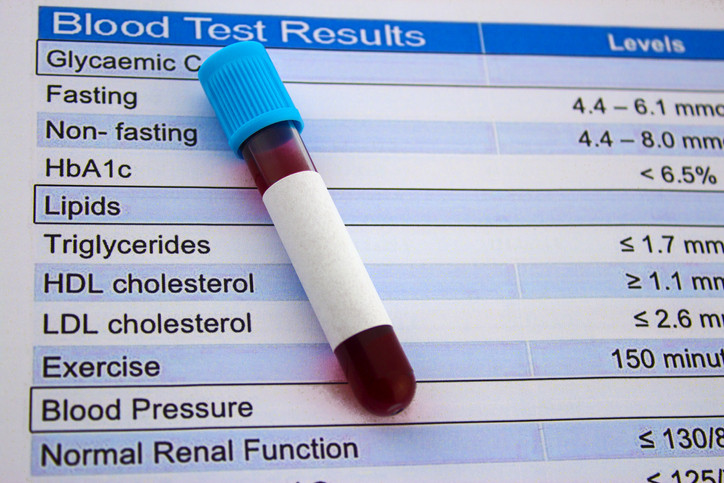Introduction:
HDL-C, or high-density lipoprotein cholesterol, is often referred to as "good cholesterol" because it plays a key role in the removal of LDL-C, or low-density lipoprotein cholesterol, from the bloodstream. LDL-C is often referred to as "bad cholesterol" because it can accumulate in the walls of the arteries, leading to a condition called atherosclerosis, which increases the risk of heart disease and stroke.
HDL-C levels are measured as part of a standard lipid panel, which is a blood test used to assess an individual's risk of developing heart disease. The American Heart Association recommends that adults have their cholesterol levels checked at least every four to six years. HDL-C levels are measured in milligrams per deciliter (mg/dL).

HDL-C Levels:
A healthy level of HDL-C is considered to be 60 mg/dL or higher. However, levels of HDL-C above 40 mg/dL are considered to be protective against heart disease. Lower levels of HDL-C, such as less than 40 mg/dL, are considered to be a risk factor for heart disease.
There are several factors that can influence HDL-C levels, including genetics, lifestyle, and underlying medical conditions. Some of the most common causes of low HDL-C levels include:
- Smoking – Smoking can decrease HDL-C levels by as much as 10%.
- Poor diet – A diet high in saturated and trans fats can decrease HDL-C levels.
- Lack of physical activity – Physical inactivity can decrease HDL-C levels.
- Obesity – Obesity is associated with lower HDL-C levels.
- Genetics – Some individuals may have a genetic predisposition to lower HDL-C levels.

Medical Conditions That Can Cause Lower HDL-C Levels:
Medical conditions such as diabetes, kidney disease, and certain medications like birth control pills, androgen replacement therapy, glucocorticoids, and protease inhibitors can also lower HDL-C levels.

Treatment:
There are several lifestyle modifications that can help to increase HDL-C levels, including:
- Quitting smoking – Quitting smoking can increase HDL-C levels by as much as 10%.
- Eating a healthy diet – A diet high in fruits, vegetables, and whole grains, and low in saturated and trans fats can increase HDL-C levels.
- Regular physical activity – Regular physical activity can increase HDL-C levels.
- Maintaining a healthy weight – Maintaining a healthy weight can increase HDL-C levels.
- Consuming alcohol in moderation – Moderate alcohol consumption (1-2 drinks per day for men and 1 drink per day for women) has been shown to increase HDL-C levels.
In addition to lifestyle modifications, some individuals may also need to take medications to increase their HDL-C levels. The most common medications used to increase HDL-C levels include niacin and fibrates. Niacin is a B vitamin that has been shown to increase HDL-C levels by as much as 30%. Fibrates are a class of drugs that work by increasing the activity of a protein called peroxisome proliferator-activated receptor alpha (PPAR-alpha), which helps to remove LDL-C from the bloodstream.
Potential Risks:
It is important to note that while low HDL-C levels are a risk factor for heart disease, high HDL-C levels are not necessarily protective. In some cases, individuals with high HDL-C levels may still have a high risk of heart disease due to other risk factors such as high LDL-C levels, high blood pressure, or diabetes. Additionally, some individuals with low HDL-C levels may have a lower risk of heart disease due to other protective factors, such as a healthy diet, regular physical activity, and a healthy weight. Therefore, it is important to consider the overall cardiovascular risk profile of an individual, rather than solely focusing on HDL-C levels.
It is also important to note that while increasing HDL-C levels is an important aspect of reducing the risk of heart disease, it is not the only factor to consider. Other important aspects include maintaining healthy levels of LDL-C, blood pressure, and blood sugar, as well as not smoking, eating a healthy diet, and getting regular physical activity.
Conclusion:
In conclusion, HDL-C, or high-density lipoprotein cholesterol, is often referred to as "good cholesterol" because it plays a key role in the removal of LDL-C, or low-density lipoprotein cholesterol, from the bloodstream. A healthy level of HDL-C is considered to be 60 mg/dL or higher. However, levels of HDL-C above 40 mg/dL are considered to be protective against heart disease. Factors that can influence HDL-C levels include genetics, lifestyle, and underlying medical conditions. Lifestyle modifications such as quitting smoking, eating a healthy diet, regular physical activity, and maintaining a healthy weight can help to increase HDL-C levels. Medications such as niacin and fibrates can also be used to increase HDL-C levels. It is important to consider the overall cardiovascular risk profile of an individual, rather than solely focusing on HDL-C levels.

